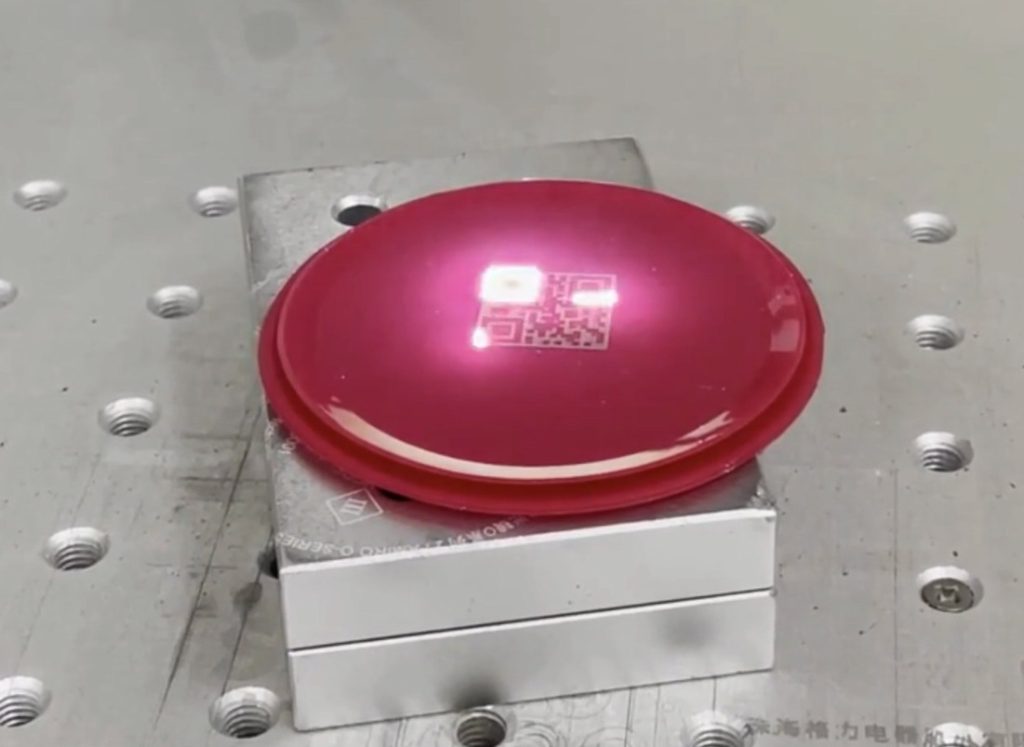The current industrial regulations require parts to have clearly legible identifications, therefore, increasing the popularity of the laser marking process. Previous industrial trends required manufacturers to mark surfaces with traditional engraving or screen printing processes. These processes were non-permanent, costly, and usually caused part defects.
However, the introduction of laser marking now allows engineers and manufacturers to create numbers, images, or characters without compromising part quality. Instead of using physical tools for etching surfaces, this technique employs focused laser beams to create easy-to-read, damage-free marks.
Laser marking is a very versatile process, encompassing different techniques such as engraving, etching, foaming, carbon migration, etc. The right marking method will depend on your material and quality requirements. Read on as we discuss the details of this innovative technique.

Laser marking is a process that uses a concentrated beam of light to create permanent marks on the surfaces of target components. The process is typically carried out with a laser machine using an oscillator, a scanning mirror, and a focusing
The machine also allows automation and processing at high speeds, consequently leaving permanent traceable marks on a wide range of materials. Laser marking allows parts and products to be marked with:
The laser marking technology creates lasting marks on component surfaces by generating focused beams of light containing high energy levels. The built-up energy is released in the coherent light beam directed at the material surface using mirrors.
As a result of the light beam interacting with the component’s surface, there is a transfer of heat energy from the beam to the surface. Therefore, the appearance and properties of the material will change. Depending on the energy level, the laser can engrave, etch, anneal, or discolor surfaces with great precision.
The concentrated beam targets only specific areas on the material, ensuring precise, high-contrast, and high-quality marks. These marks are permanent, and you can easily read or scan them on any surface. As a result, this marking process is ideal for operations where permanency and accuracy are critical.
Laser technology began with Albert Einstein back in the early 1900s, and further evolution was seen in 1964 with the creation of the first CO2 laser. Peter Houldcroft of The Welding Institute (TWI), Cambridge, pioneered the first commercial applications of Laser Material Processing. The earliest “Laser Machining” applications were driven by manufacturers of automobiles and aircraft components.
In a bid to improve computer engravings, Electrox developed the first commercial axial flow CO2 laser machine as a major source of laser marking systems. Technological advancements in the 1980s and 1990s led to an integration of computer systems into laser marking. The more efficient and modern fiber lasers came to light in 2001, and has improved ever since.
Today, laser markers are more improved, accurate, faster, and more environmentally friendly. There are now more versatile and cost-effective laser marking technologies, creating high-quality durable markings directly on part’s surfaces. These technologies are faster, more compact, and can create marks on a wider range of substrates.
As a result of the more powerful and flexible systems, users can create consistent markings on a large batch of products. Therefore, they achieve business goals within a short time and at lower prices.
There are several laser marking technologies for different applications out there. Each technique has its benefits and downsides, and your choice will depend on budget, quality requirements, and applications. Let’s examine some of these techniques.